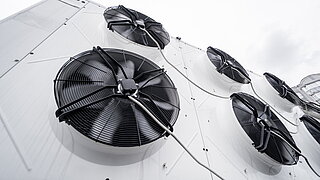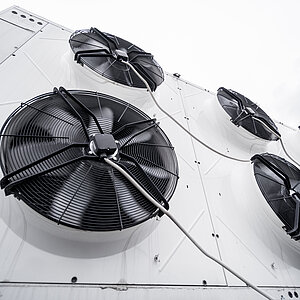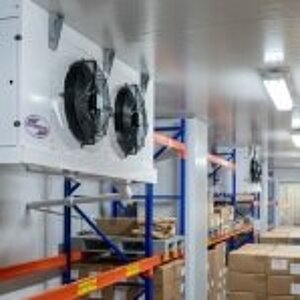Alternatives to harmful F gases

Despite their huge impact on the climate, fluorinated greenhouse gases (F gases) are still deployed as coolants or propellants in air conditioning units, refrigerators, foams and insulation materials. Depending on the substance, the greenhouse effect may be 100 to 24,000 times higher than for carbon dioxide. Reducing emissions from these substances requires the targeted replacement of F gases by environmentally friendly alternatives or a switch to alternative technologies.
Globally, the refrigeration and air conditioning sector represents a huge growth market, and its relevance for climate policy continues to grow as result of the sharp rise in refrigeration and a/c units being used in emerging and developing countries. Damage to the climate does not occur merely as a result of direct F gas emissions from leaks or the unprofessional decommissioning of these units: indirectly, CO2 emissions are also produced by the energy consumption of these refrigeration and a/c units.
Reducing emissions of fluorinated greenhouse gases now enshrined in international law
Measures to reduce emissions of fluorinated greenhouse gases are essential and make a significant contribution to climate change mitigation. The urgency of these mitigation policies has also been recognised at international level. In 2016, this realisation was made a binding part of international law by the Kigali Amendment to the Montreal Protocol.
The adoption of the Kigali Amendment sets out various legally binding obligations for industrial and developing countries that first require a moratorium on the production and use of partially fluorinated hydrocarbons (a subgroup of F gases), followed by a phase-out in following years.
According to estimates, merely ensuring the implementation of the Kigali Amendment could avoid a further global temperature rise of up to 0.5 degrees Celsius by the year 2100.
IKI supports climate-friendly cooling technologies
F gases are anthropogenic in nature, and can be replaced by existing natural coolants such as ammonia gas, hydrocarbons or even CO2. Climate-friendly cooling technologies that utilise natural coolants are especially environmentally friendly and are promoted by IKI projects worldwide. This ensures support for both international and bilateral cooperation on climate and ozone protection policy, as well as a sustainable transition for the cooling sector.
The overall aim is to establish the use of natural coolants on an international basis, and to introduce energy-efficient cooling and air conditioning units that are also powered by renewable energy. Achieving these goals will require meaningful data, international standards, support from policy frameworks, knowledge transfer and access to appropriate financing options.
To this end, IKI projects aim to build institutional and technical capacities in partner countries while also identifying potential routes to financing. Within these partner countries, technical cooperation and pilot demonstration projects are used to highlight both the economic and ecological advantages of a transition to sustainable technologies.
Selected projects
Videos on this topic
The link has been copied to the clipboard








